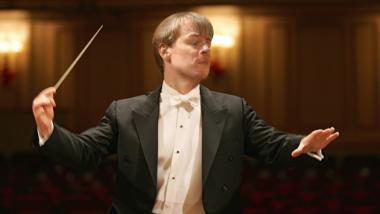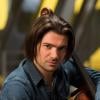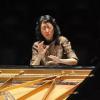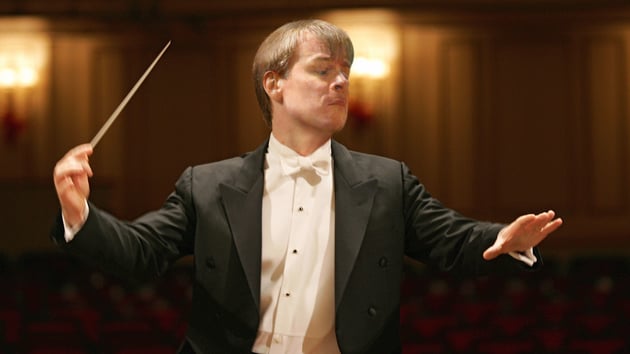
David Robertson has been a guest conductor of San Francisco Symphony for two decades, but I hadn’t seen him before Saturday, when he conducted the best Haydn performance (Symphony No. 102) I’ve seen at Davies. What have I missed all these years?
It was so great, in fact, that I assumed him to be the kind of exacting leader audiences love for the results, but musicians hate for the rehearsal grind. Wrong: I asked around, and by all accounts, he’s a pleasure to work with, and he exuded joie de vivre onstage. Robertson has just left the Saint Louis Symphony Orchestra, and will teach at Juilliard starting in the fall, on top of his frequent traveling. He’s probably not in the running for MTT’s job, but, judging from this program, I wish he were.
From the first notes of the Largo, the orchestral sound had a striking purity, yet with warmth that persisted even in the bubbly Allegro. The development introduced a meatier sound, yet choice chords were refined, the quiet moments extremely so, but never paltry or pale. The string-wind doublings were wonderfully clear.
Expansiveness made the Adagio tender, an elongated breath, before the most beautiful modulation, preparing the audience to treasure it. In the Minuet, energy contrasted with elegance – an everyday polarity, but done well, especially by the winds. Playing the last repeat of a minuet can feel merely obligatory (and sitting through it as spectator can feel much worse), but on Saturday, with an extra bit of piano and dramatic pacing in reserve, the da capo felt special.
The finale was quick and engaging, the false ending, in fact, a little too convincing for the audience, who applauded with greater enthusiasm than I usually hear after a basically standard classical symphony. That’s the Robertson Effect.
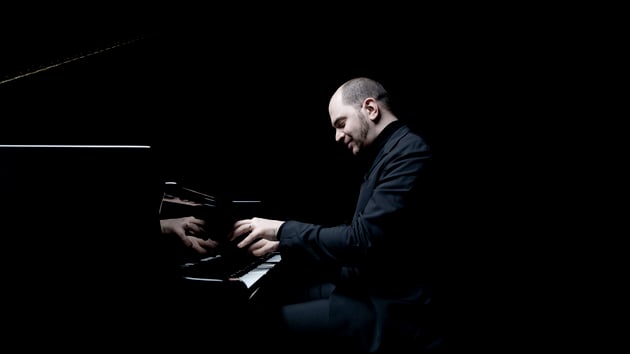
The Haydn could have sent us home in great spirits, but then there was the second act: Brahms’s Piano Concerto No. 1. Kirill Gerstein pulled the necessary power, but he didn’t draw much expression out of the piano; I wanted to be moved but wasn’t. The second movement was the subtlest, but any magic was the orchestra’s.
In fact, the short Brahms-inspired piece that had opened the program fared much better. Engelsflügel, by the Australian composer and violist Brett Dean, draws from the quietude and fragility of Brahms’s duo sonatas and lieder.
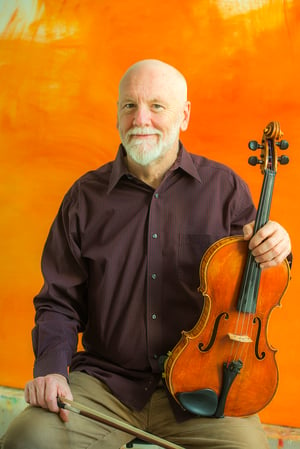
It’s also possible to hear in the music allusions to Brahms’s personal life — vis-à-vis Clara Schumann. In Dean’s work, the sections of the orchestra rarely move in sync; Clara was more than a decade older than Johannes (not to mention married to Johannes’s friend). Stop-start phrases evoke suppressed impulses and restraint. But even without these programmatic associations, Dean’s score is beautiful and curious.
The beginning is shy. In fragmented bursts, flutters and oscillations combine lushly and briefly; even as the orchestra’s volume grows, its matter is turbulent, motives churning through the sections like waves. Recurring trumpet calls sound solemn and, with mutes, increasingly distant, like a fading memory.
Sounds increase in strength but disperse as soon as they come to a head, unfurling lines petering out with pitches distorting. Finally, the sections join in a common pulse, slower and more reserved — but then, with a tiny flourish, it all evaporates.
Dean’s score is intricately colored; at times, there’s a kind of romantic Orientalism in his language that sounds almost like Szymanowski. But Engelsflügel is also hauntingly sparse, muffled in a way unlike anything I’ve heard at the Symphony before, let alone in the overture slot — just 10 minutes of the program, but with a substantial effect.

